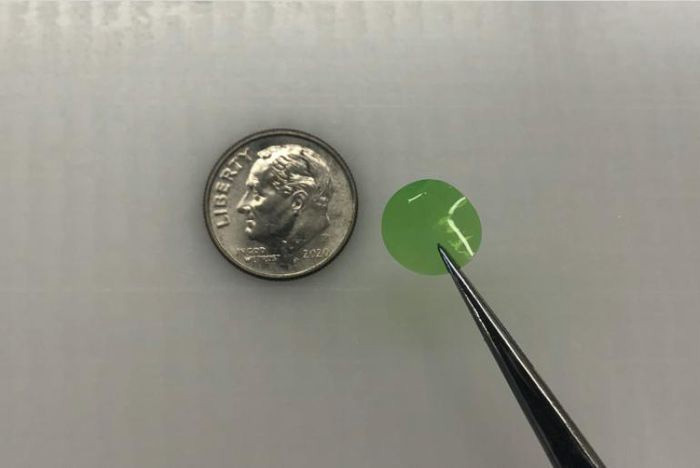This technology was developed by Tufts University in Massachusetts, in the laboratory of Professor David Kaplan. It currently takes the form of a thin membrane disc smaller than a coin and is surgically implanted beneath the skin layers, similar to a tattoo. The membrane is made from a type of permeable gel primarily composed of fibroin – a protein derived from silk. Fibroin is not only biodegradable and biocompatible but also does not alter the chemical properties of substances added to it.

The sensor membrane is typically green but glows purple when exposed to near-infrared light in the presence of oxygen.
In this case, a compound known as PdBMAP emits light when exposed to near-infrared light – the greater the amount of oxygen in the immediate environment, the shorter the glow duration. Depending on how it is produced, the sensor will harmlessly dissolve in the body over a period ranging from several weeks to a year.
In an experiment, scientists implanted the sensor into the skin of laboratory mice and then exposed the area to near-infrared light. The sensor responded by glowing, with the duration of the glow accurately reflecting the oxygen levels of the surrounding interstitial fluid, which in turn reflects the oxygen levels in the blood.
Although blood oxygen levels can be measured non-invasively using pulse oximeters, it is hoped that once further developed, this sensor technology could also be used to measure other substances in the blood, such as glucose, lactate, or electrolytes. Currently, such measurements must be obtained through blood samples or by attaching patients to complex devices.
Thomas Falcucci, a researcher in Kaplan’s lab who developed this device, stated: “We can envision many scenarios where a tattoo-like subcutaneous sensor could be beneficial. This is often in situations where individuals with chronic conditions need to be monitored for extended periods outside of a traditional clinical setting. We can monitor multiple blood components using a subcutaneous sensor membrane.”


















































